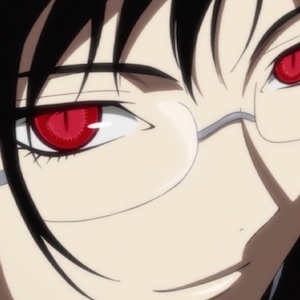Interpreting Anime
by Christopher Bolton
Contents

Each chapter of Interpreting Anime focuses on one or two feature films or short series, juxtaposes them with a different comparison medium, and brings a different kind of critical theory to bear.
Introduction.
Scope and method • Sample reading: Masunari Kōji's R.O.D: Read or Die (2001-2002).Chapter 1.
The origins of anime and early anime criticism • Ōtomo Katsuhiro's Akira anime (1988) and manga (1982-90) • Superflat art • Jean Baudrillard, Fredric Jameson, and theories of the postmodern.Chapter 2.
Oshii Mamoru's early career • Patlabor 2 and the Patlabor franchise • Mediation and remediation • Cinema vs. electronic media • Vivian Sobchack's phenomenology of film.Chapter 3.
Oshii Mamoru • Ghost in the Shell (1995) and Ghost in the Shell 2: Innocence (2004) • Japanese bunraku theater • Cyborg and puppet bodies • Structuralism and Roland Barthes • Donna Haraway, poststructuralist feminism, and the posthuman.Chapter 4.
Anime horror • Original video animation (OVAs) • Wicked City (1987), 3x3 Eyes (1991-92, 1995-96), and Vampire Princess Miyu (1988-89) • Mediated and unmediated experience • Fan culture • Psychoanalysis and theories of the otaku • Okada Toshio, Saitō Tamaki, and Azuma Hiroki.Chapter 5.
Kon Satoshi • Perfect Blue (1997) and Millennium Actress (2001) • Live-action stage drama • Phenomenology revisited • Judith Butler: gender performativity and drag performance • Queer spectatorship.Chapter 6.
Collaborative creation • Blood: The Last Vampire (2000) • 2D vs. 3D animation • Thomas Lamarre and the anime machine • Theories of the media mix • Television anime and the Blood franchise: Blood+ (2005-6) and Blood-C (2011) • Shiotani Naoyoshi and Blood-C: The Last Dark (2012).Chapter 7.
Miyazaki Hayao and Studio Ghibli • Howl's Moving Castle: It's Art, But is it Anime? • The legacy of Tōei Dōga • Diana Wynne Jones's novel vs. Miyazaki's film • Romantic theory • Miyazaki's uncertain successor.Conclusion.
Hosoda Mamoru • Summer Wars (2009) • Anime, criticism, and communication.Chronology • Moving Image Sources • Bibliography • Notes • 70 b/w illustrations.